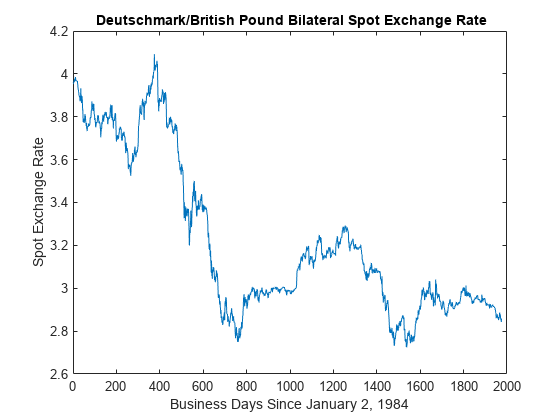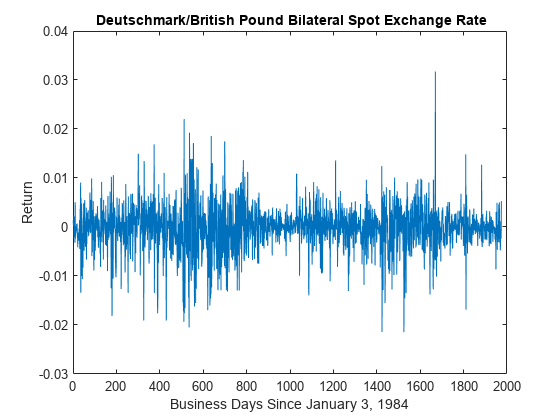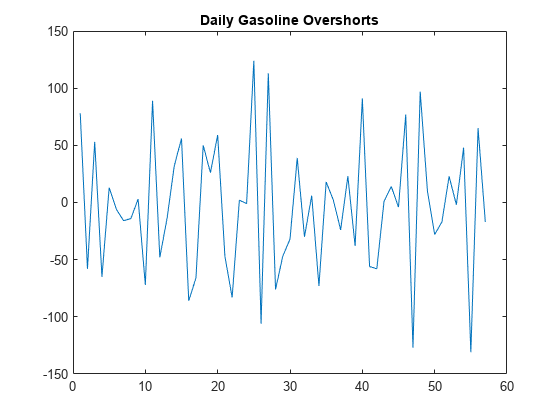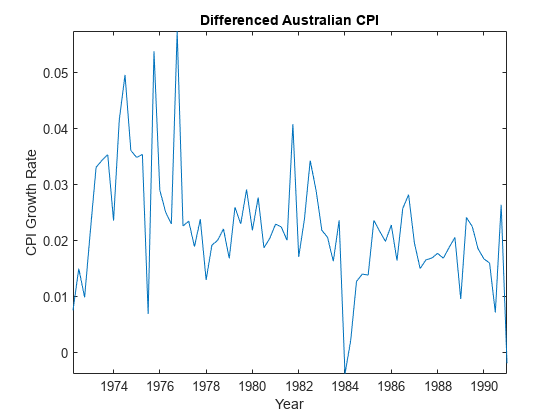lbqtest
Ljung-Box Q-test for residual autocorrelation
Syntax
Description
h = lbqtest(res)
StatTbl = lbqtest(Tbl)DataVariable name-value argument.
[___] = lbqtest(___,
specifies options using one or more name-value arguments in
addition to any of the input argument combinations in previous syntaxes.
Name=Value)lbqtest returns the output argument combination for the
corresponding input arguments.
Some options control the number of tests to conduct. The following conditions
apply when lbqtest conducts multiple tests:
For example,
lbqtest(Tbl,DataVariable="ResidualGDP",Alpha=0.025,Lags=[1
4]) conducts two tests, at a level of significance of 0.025, for the
presence of residual autocorrelation in the variable ResidualGDP
of the table Tbl. The first test includes 1
lag in the test statistic, and the second test includes 4
lags.
Examples
Input Arguments
Name-Value Arguments
Output Arguments
More About
Tips
If you obtain the input residual series by fitting a model to data, reduce the degrees of
freedom DoF by the number of estimated coefficients, excluding
constants. For example, if you obtain the input residuals by fitting an
ARMA(p,q) model, set
DoF=L−p−q,
where L is the value of Lags.
Algorithms
The value of the
Lagsargument L affects the power of the test.If L is too small, the test does not detect high-order autocorrelations.
If L is too large, the test loses power when a significant correlation at one lag is washed out by insignificant correlations at other lags.
Box, Jenkins, and Reinsel suggest the default setting
Lags=min[20,T-1][1].Tsay cites simulation evidence showing better test power performance when L is approximately
log(T)[5].
lbqtestdoes not directly test for serial dependencies other than autocorrelation. However, you can use it to identify conditional heteroscedasticity (ARCH effects) by testing squared residuals [4].Engle's test assesses the significance of ARCH effects directly. For details, see
archtest.
References
[1] Box, George E. P., Gwilym M. Jenkins, and Gregory C. Reinsel. Time Series Analysis: Forecasting and Control. 3rd ed. Englewood Cliffs, NJ: Prentice Hall, 1994.
[2] Brockwell, P. J. and R. A. Davis. Introduction to Time Series and Forecasting. 2nd ed. New York, NY: Springer, 2002.
[3] Gourieroux, C. ARCH Models and Financial Applications. New York: Springer-Verlag, 1997.
[4] McLeod, A. I. and W. K. Li. "Diagnostic Checking ARMA Time Series Models Using Squared-Residual Autocorrelations." Journal of Time Series Analysis. Vol. 4, 1983, pp. 269–273.
[5] Tsay, R. S. Analysis of Financial Time Series. 2nd Ed. Hoboken, NJ: John Wiley & Sons, Inc., 2005.
Version History
Introduced before R2006a



